Who is in Charge of Your Learning?
Twenty three years ago I sat across from my third grade student’s guardians at a table in the center of my classroom. I showcased student work, sharing my thoughts on what the student was doing well and areas for growth. Then, like going through a turnstile, one family left and another guardian showed up at the table. The students came back the next day, and I asked if any of them discussed with their guardians what we talked about the day or evening before. Some students stared at me with blank faces while others repeated what their guardians shared, which was not always the perspective I had shared but what the guardian had interpreted from what I had said. Something was wrong. This did not feel right. The human in charge of their learning was missing from the table. I decided after that year the students would always have a voice in their conferences and began an odyssey of student-led conferences that has not only empowered students but also has afforded opportunities for students to have a voice in their learning and begin working on their areas of growth the next school day.
I firmly believe a shift needs to happen in education where students lead their own conferences, moving away from parent-teacher conferences. This term is antiquated and not every child has a parent. The language should change to family conference even if student-led is not happening. This shift can start as early as preschool! There are many reasons for this shift, some of which I mentioned in an article I wrote for ESchool News in 2019. A lot of educators may be wondering where to start, so I wanted to offer some practical advice on how to make the change to student-led conferences. This does take time, but the benefits far outweigh the challenges.
Before beginning to prepare for the student-led conference, it is important to teach public speaking skills with your students throughout the year. My students have been presenting all year in front of audiences, so though they might be somewhat nervous at first to present their learning, they are used to talking to an audience. I suggest providing opportunities for public speaking well before the student-led conferences to help your students with presenting skills. We use Erik Palmer’s PVLEGs to help teach public speaking skills throughout the year.
The other pedagogical practice I have put in place is feedback . Alice Keeler once talked about how giving feedback at the end of an assignment is too late. I took that statement to heart, and I give both positive and constructive comments while students are working. Using the comment feature in online productivity tools is a great place to provide feedback. Feedback can be given via text, audio, or video for students. Having students then work on the feedback, leaving the comments on the work, helps the child’s team see the growth happening before their very eyes! This feedback is a springboard for students when they begin their portfolio work for student-led conferences.
The first place I start when it is ready to begin our voyage into student-led conferences is helping students understand and be part of the report card process . This lays the foundation for developing a portfolio to showcase at a student led conference. I review the report card section labeled Behaviors that Contribute to School Success with the students. Then I have each student complete a Google Form, sharing what they think they deserve. I use their own thinking to help me fill out this section of the standards based report card we use in my elementary school. Then I complete the rest of the report card, printing out a draft two weeks early for students to review. I explain what the letters on the report card mean, sharing this information with guardians in an email. I invite students to ask questions about letters they received, and we discuss. If a student has evidence for why the letter should be changed, I make the correction in front of the child! Students have time to ask about what each standard means too. Having these rich conversations about how students are being assessed helps them better understand the report card and makes the information more meaningful.
My students are involved in two conferences throughout the school year, so having a digital portfolio is essential. I had thought they would be ready to make a portfolio using Google Sites in the fall to build upon in the spring. I learned quickly this was not the best option for students because they were unfamiliar with Google Sites. I decided to use a Google Slide Deck in the fall, which was a tool they were all familiar with. So thinking about tools your students are able to access and understand how to use is the next step in designing a student led conference experience.
I developed a model Slide Deck and made a copy for each student that was pushed out in Google Classroom. I started with strengths and areas for growth, which the students used their report card draft as a springboard for ideas for evidence. Teaching students to reflect on their own work and thinking is a higher level skill that benefits them immensely. I then reviewed with students each slide in the template, and as a class we came up with a list of ways to provide evidence of their learning. They suggested we use images of work samples, video tools such as Screencasitfy or Flip (I have parent permission for students to use this tool since they are under 13) where they can explain their thinking, a white board to show how to do something, or a text box. Having a discussion about what evidence means is imperative to focus the student on what they are going to show to their guests at the conference. They gave themselves lots of options! Students then went through each subject and thought about what they are good at, what they have learned, and what they need to work on. I conference with each child throughout this process, which takes about one school day to complete. Once the class is done we model what a student led conference will look like. Students then have a chance to practice going through their slide decks with a buddy of their choice whom they trust.
When it is time for the conference, students enter the room with their guests. I invite all support staff who work with each child to be included in their conference. We want to celebrate the success of the individual child as a team! We sit at our kidney table and the student presents from the SMARTboard. He/she/they use a remote clicker that he/she/they use for class presentations previously and a mic (should he/she/ they want it). Guests can take time to ask questions. At the end, we have a few minutes left should the adults want to talk to the teachers without the child present. The child has been prepared for this, taking a book to read in the hallway. It is rare when an adult asks to do this, since the child has covered everything throughout their conference.
In March, we gear up for our spring conferences, this time developing a Google Site . I teach the students about how to make a site, showing them the various tools available for them. I created a model of the Google Site I expect him/her/them to make, which we go through as a class. Then students begin working on each page, checking in with me as they go. It is amazing to see how the students articulate their learning, and immediately begin working on his/her/their areas for growth and take on such pride when sharing his/her/their learning with others.
Now when I sit at the table as a facilitator of learning, eyes shining brightly, I listen intently to each individual child. I realize he/she/they say more than I ever could in 15-20 minutes to their adult support team. The person in charge of his/her/their learning had a seat at the table. We, as educators, need to trust our students. They can articulate everything we would say to guardians, and it is much more powerful coming from the student.

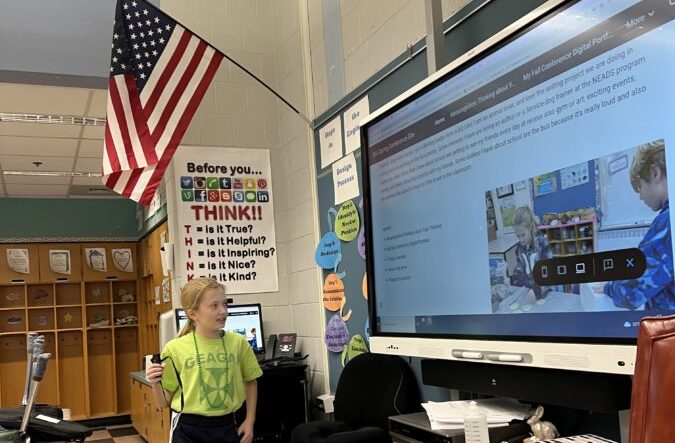

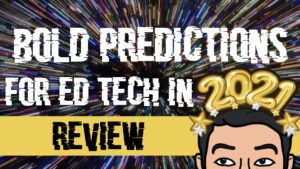
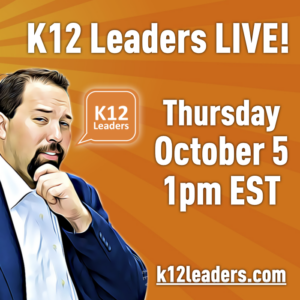
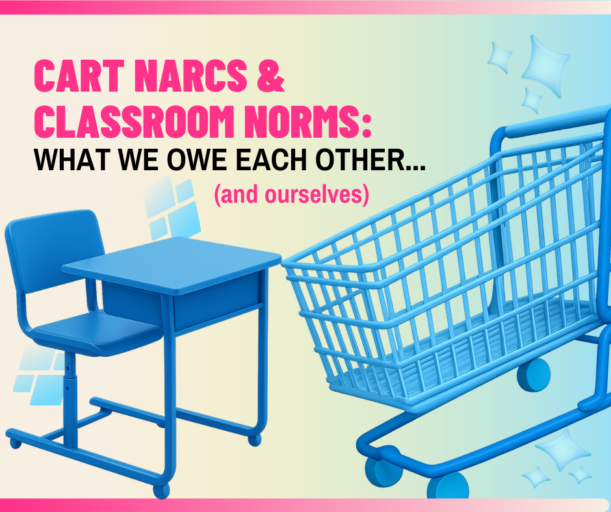
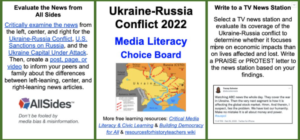
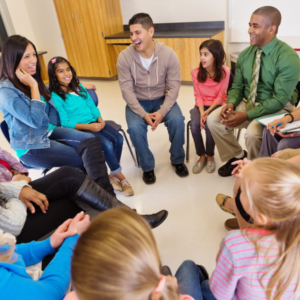
Rayna, Thanks for sharing these examples of preparing students and their guests to participate in such a trusted consultation! I love the ‘evidence’ you’re providing. Do you find that students and their guests are able to better understand the “standards based report cards” with this preparation?
Yes! Students and their guests not only have a better understanding of the report card itself but also a solid understanding of what they got, the why behind it, and what they need to do to grow.